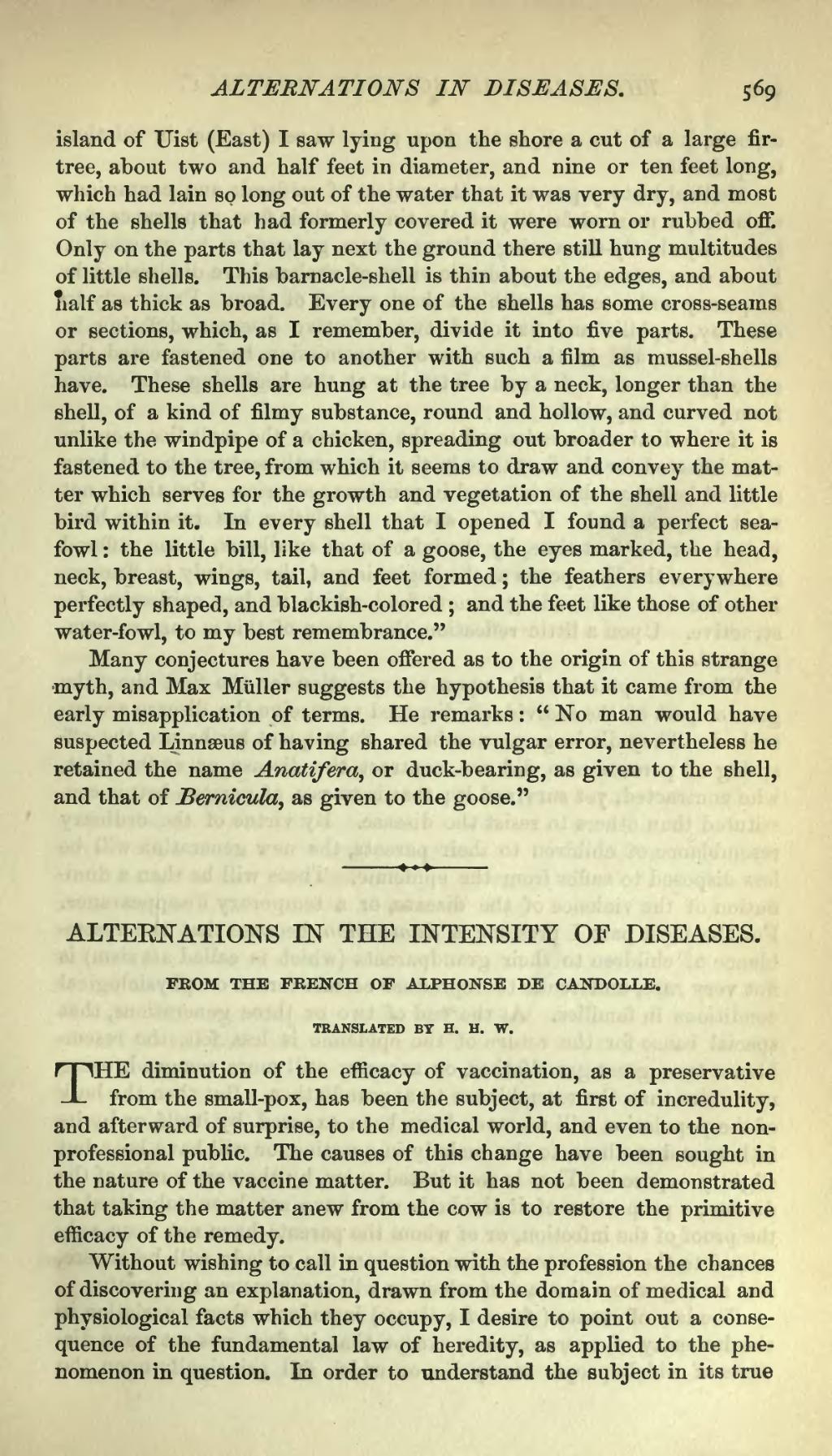island of Uist (East) I saw lying upon the shore a cut of a large fir-tree, about two and half feet in diameter, and nine or ten feet long, which had lain so long out of the water that it was very dry, and most of the shells that had formerly covered it were worn or rubbed off. Only on the parts that lay next the ground there still hung multitudes of little shells. This barnacle-shell is thin about the edges, and about naif as thick as broad. Every one of the shells has some cross-seams or sections, which, as I remember, divide it into five parts. These parts are fastened one to another with such a film as mussel-shells have. These shells are hung at the tree by a neck, longer than the shell, of a kind of filmy substance, round and hollow, and curved not unlike the windpipe of a chicken, spreading out broader to where it is fastened to the tree, from which it seems to draw and convey the matter which serves for the growth and vegetation of the shell and little bird within it. In every shell that I opened I found a perfect sea-fowl: the little bill, like that of a goose, the eyes marked, the head, neck, breast, wings, tail, and feet formed; the feathers everywhere perfectly shaped, and blackish-colored; and the feet like those of other water-fowl, to my best remembrance."
Many conjectures have been offered as to the origin of this strange myth, and Max Müller suggests the hypothesis that it came from the early misapplication of terms. He remarks: "No man would have suspected Linnæus of having shared the vulgar error, nevertheless he retained the name Anatifera, or duck-bearing, as given to the shell, and that of Bernicula, as given to the goose."
| ALTERNATIONS IN THE INTENSITY OF DISEASES. |
FROM THE FRENCH OF ALPHONSE DE CANDOLLE.
TRANSLATED BY H. H. W.
THE diminution of the efficacy of vaccination, as a preservative from the small-pox, has been the subject, at first of incredulity, and afterward of surprise, to the medical world, and even to the non-professional public. The causes of this change have been sought in the nature of the vaccine matter. But it has not been demonstrated that taking the matter anew from the cow is to restore the primitive efficacy of the remedy.
Without wishing to call in question with the profession the chances of discovering an explanation, drawn from the domain of medical and physiological facts which they occupy, I desire to point out a consequence of the fundamental law of heredity, as applied to the phenomenon in question. In order to understand the subject in its true
